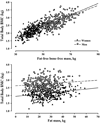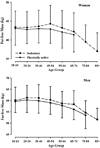Muscle forces or gravity: what predominates mechanical loading on bone?
- PMID: 19812511
- PMCID: PMC3037021
- DOI: 10.1249/MSS.0b013e3181a8c717
Muscle forces or gravity: what predominates mechanical loading on bone?
Abstract
Most mechanical forces acting on the skeleton are generated either through impact with the ground (i.e., gravitational loading) or through muscle contractions (i.e., muscle loading). If one of these conduits for activating mechanotransduction in bone is more effective than the other with respect to developing or maintaining bone strength, this would have important clinical implications for prescribing physical activity for the prevention or treatment of osteoporosis. This section of the symposium considered whether there is evidence from studies of humans that the effectiveness of physical activity to preserve bone health is dependent on whether the activities stimulate the skeleton primarily through gravitational or muscle loading. Conclusive evidence is lacking, but several lines of research suggest that physical activities that involve impact forces, and therefore generate both gravitation and muscle loading, are most likely to have beneficial effects on bone metabolism and reduce fracture risk.
Figures




References
-
- Barry DW, Kohrt WM. Acute effects of 2 hours of moderate-intensity cycling on serum parathyroid hormone and calcium. Calcif Tissue Int. 2007;80:359–365. - PubMed
-
- Barry DW, Kohrt WM. BMD decreases over the course of a year in competitive male cyclists. J Bone Miner Res. 2008;23:484–491. - PubMed
-
- Bergmann G, Graichen F, Rohlmann A. Hip joint loading during walking and running, measured in two patients. J Biomech. 1993;26:969–990. - PubMed
-
- Binder EF, Kohrt WM. Relationships between body composition and bone mineral content and density in older women and men. Clin Exerc Physiol. 2000;2:84–91.
-
- Boonyaratavej N, Suriyawongpaisal P, Takkinsatien A, et al. Physical activity and risk factors for hip fractures in Thai women. Osteoporos Int. 2001;12:244–248. - PubMed
Publication types
MeSH terms
Grants and funding
LinkOut - more resources
Full Text Sources

